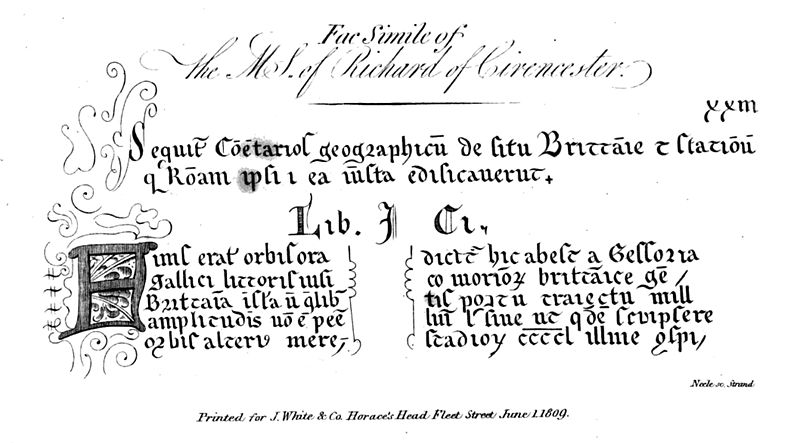
Charles Bertram built his reputation as a historian on The Description of Britain, a 15th-century manuscript that he’d discovered at age 24 and that provided important new insights into British history, including an ancient map; more than a hundred names of cities, roads, and people; and information from a lost contemporary account by a Roman general. For more than a century Bertram’s discovery served as a touchstone of scholarship on Roman Britain — it was cited in Gibbon’s Decline and Fall of the Roman Empire, among many other works.
After Bertram’s death in 1765 doubts began to mount, and by 1846 it was clear that The Description of Britain had been a forgery. Bertram had managed to convince a few influential librarians, and on the strength of their endorsement other historians had been willing to take the claim seriously. Bertram had never let anyone see the original manuscript, always inventing reasons why he couldn’t share it and sending instead facsimiles of the original.
The effects of the hoax took decades to eradicate — as late as 1911 the Encyclopædia Britannica was still referring to a fictitious naval base on the strength of the Description‘s account.
